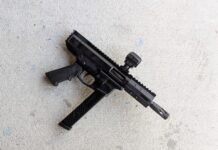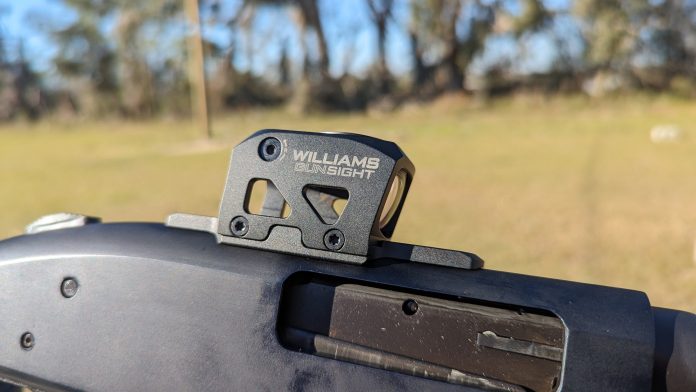
We’ve hit a few different points of stagnation in the gun world. Ammo doesn’t have much room to improve; guns have hit their foreseeable peak, and the same goes for red dots. While we probably won’t see anything revolutionary, we will see small improvements. Ammo cases are becoming lightweight, guns are getting smaller but hold just as many rounds, and Williams Gun Sight flipped a red dot upside down. By doing so, they created what they call the Low Reflex Sight, or LRS for short.
This isn’t a full review but an overview. I find it so interesting I think it’s worth two articles instead of one very long article. Williams Gun Sight is well known for creating iron sights for shotguns and rifles of various types. Their Firesights were one of the first to use high-visibility fiber optics for various iron sights. This is their first advance into the world of red dots, and instead of releasing another generic, mostly fine red dot optic, they released the LRS.
Let’s see what the LRS is and is not.
What The LRS Is
The LRS is a mini red dot sight that uses a unique design that takes the standard mini red dot and flips it upside down. They then mount the sight to a cover. At the bottom, we don’t have a traditional mounting platform. The bottom of the optic is open, for lack of a better term. It attaches to its various mounts via four screws that attach to the sides of the mount and not the top.
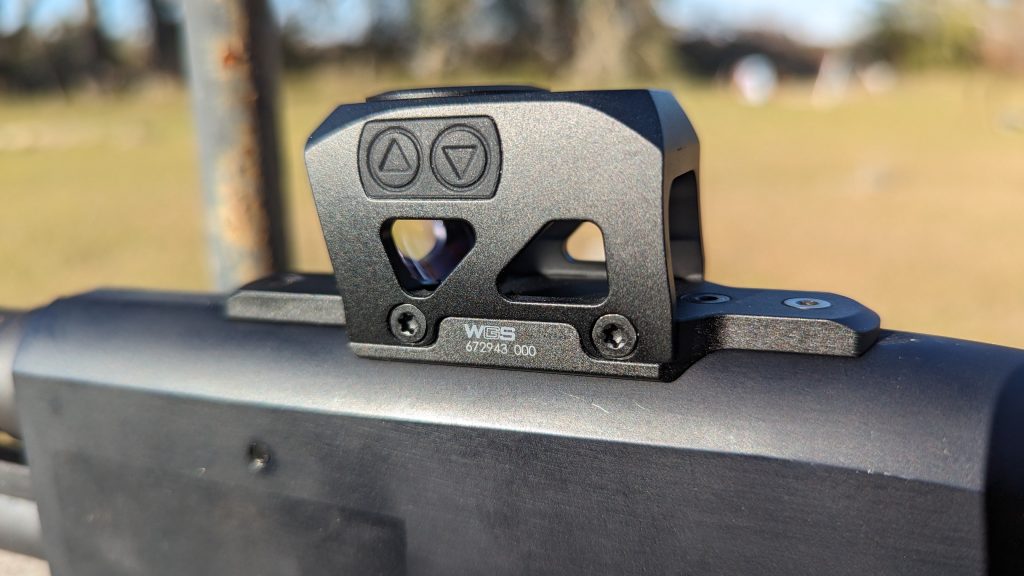
The LRS features a reticle that’s a 32 MOA segmented circle with a 2 MOA dot in the center. I’m a fan of designs like this for shotguns because they are big, eye-grabbing, and give you a method to zero your buckshot load inside the circle at certain ranges. With that said, this optic is designed for long guns, especially shotguns. Williams Gun Sights make mounts for Mossbergs, Remingtons, and Benellis.
The LRS comes ready out of the box with a battery and Picatinny rail. It features six illumination levels, and holy crap, does it get bright. The LRS has no problems with daylight bright situations. Two controls allow you to adjust the brightness level, and holding down the down button shuts the optic off.
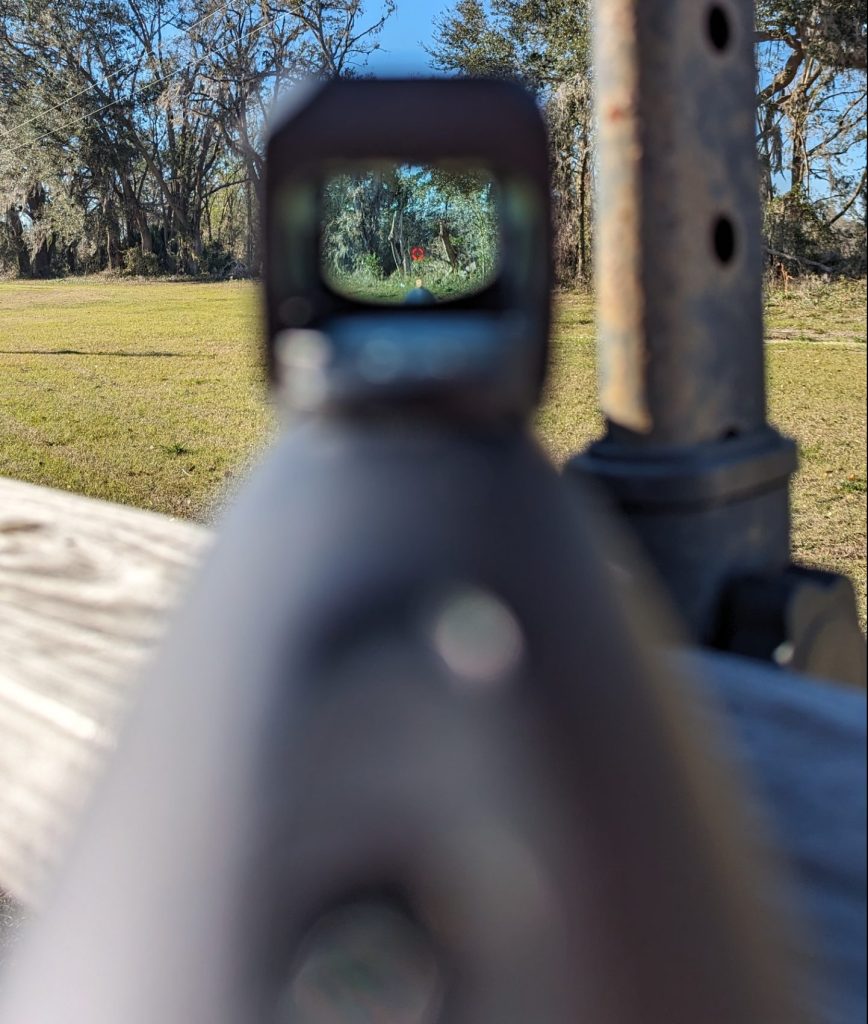
The main benefit of the LRS is that it sits super low. It’s roughly 30% lower than most red dots. When I compare the LRS with other red dots, it appears that the LRS sits as low on a standard shotgun as the red dot on my Mossberg 940 with its receiver cut design.
What the LRS Isn’t
The LRS is not an enclosed red dot. Just by looking at the pictures, I can see why someone would assume it’s an enclosed emitter design, but it’s not. On the flip side, the emitter is better protected from the elements than the standard mini-red dot.
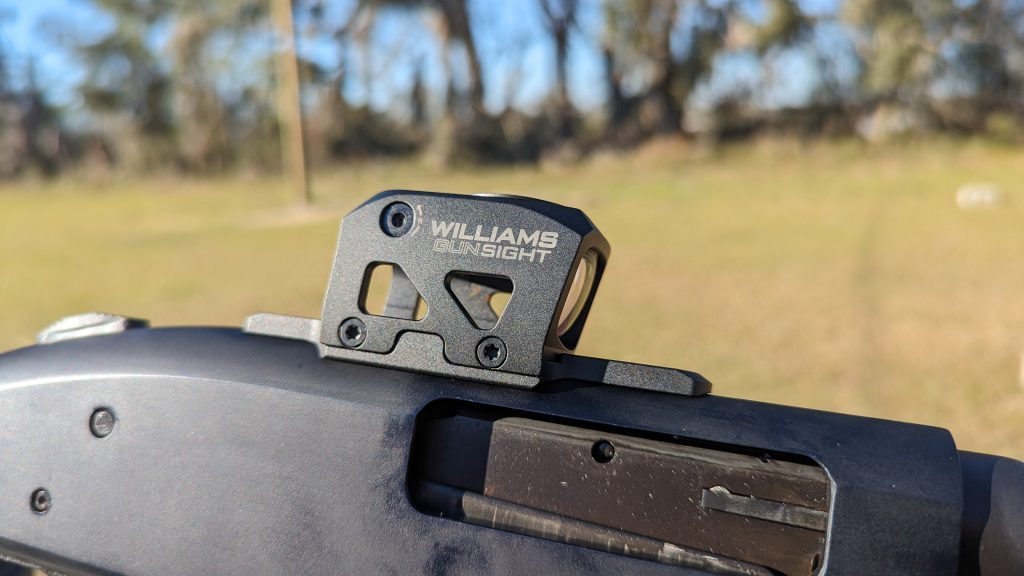
This is not a pistol red dot. It’s not rated for pistols according to William Gun Sights, and I don’t see a way for you to mount it to a handgun due to the design. The LRS doesn’t have any means to attach to a standard pistol. However, it will mount to handguns that lack reciprocating slides and have picatinny top rails, like the various Ruger MK pistols.
This isn’t your standard red dot. It’s designed for weapons that need optics to sit nice and low, which really makes it almost purpose-built for shotguns. However, it could work on lever guns and other more traditional platforms.
The Review
I haven’t had a ton of time to shoot with the LRS, but a full review is coming soon. Take this as a teaser. It’s the first red dot innovation I’ve seen this year, and I hope it works as well as it seems to. It’s currently mounted to my Mossberg 590 in 20 gauge, and I can’t wait to give it the full run around.


